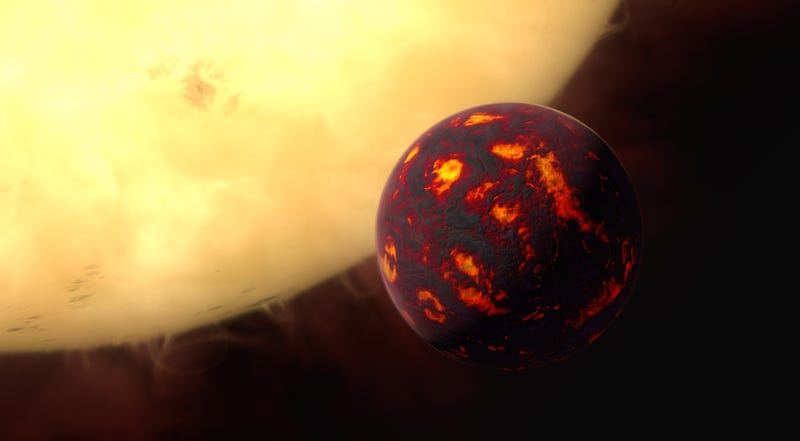
For the first time, astronomers have detected gases in the atmosphere of a super Earth, a planet larger than our own but small enough to be rocky. The fittingly named “55 Cancri e” is a broiling hellscape of a world, totally inhospitable to life as we know it. And yet, the milestone represents an important step toward the search for habitable worlds beyond our solar system.
That’s because, with the next generation of powerful space telescopes
But first, let’s talk about 55 Cancri e, because this planet is both mind-numbingly weird and historically significant. Way back in 2004—five years before the Kepler space telescope started spotting extrasolar worlds by the dozens—55 Cancri e was one of the first exoplanets humans ever found, using the old-school radial velocity method. It was also among the first potentially rocky worlds orbiting a main sequence star (a star like our Sun).
That’s where the exoplanet’s similarities to our Blue Marble end. Orbiting close enough to its parent star to give it an 18 hour year, 55 Cancri e is a searing 2,000 degrees Celsius on its surface. While we’re still not entirely sure what it’s made of, 55 Cancri e’s apparently high density has led to some strange speculation about its composition over the years—from theories that it’s a molten ball of lead to fantasies about a sparkling world of solid diamond.
Now, using new processing techniques on data from the Hubble Space Telescope, astronomers are bringing us even more insights into the world so different from our own that it’s already broadened our view of the cosmos. Results published today in The Astrophysical Journal indicate that 55 Cancri e’s atmosphere contains hydrogen and helium, with possible hints of hydrogen cyanide. If these results are confirmed with the next generation of space telescopes, says study co-author Jonathan Tennyson, “It would support the theory that this planet is indeed carbon rich and a very exotic place.”
While it’s fascinating to ponder the thousand ways we could die on a planet like 55 Cancri e, the study of exoplanet atmospheres could eventually help us find a world not so different from our own. Our telescopes aren’t yet powerful enough to sniff the air of rocky, Earth-sized planets in the not-too-hot, not-too-cold habitable zone, but a pipeline of new missions, beginning with the James Webb Space Telescope in 2018, will get us there.
In the end, if it takes a hundred molten lead and cynaide worlds before we discover a cool rocky planet with water and oxygen, I’d say that’s well worth the effort.
Follow the author @themadstone